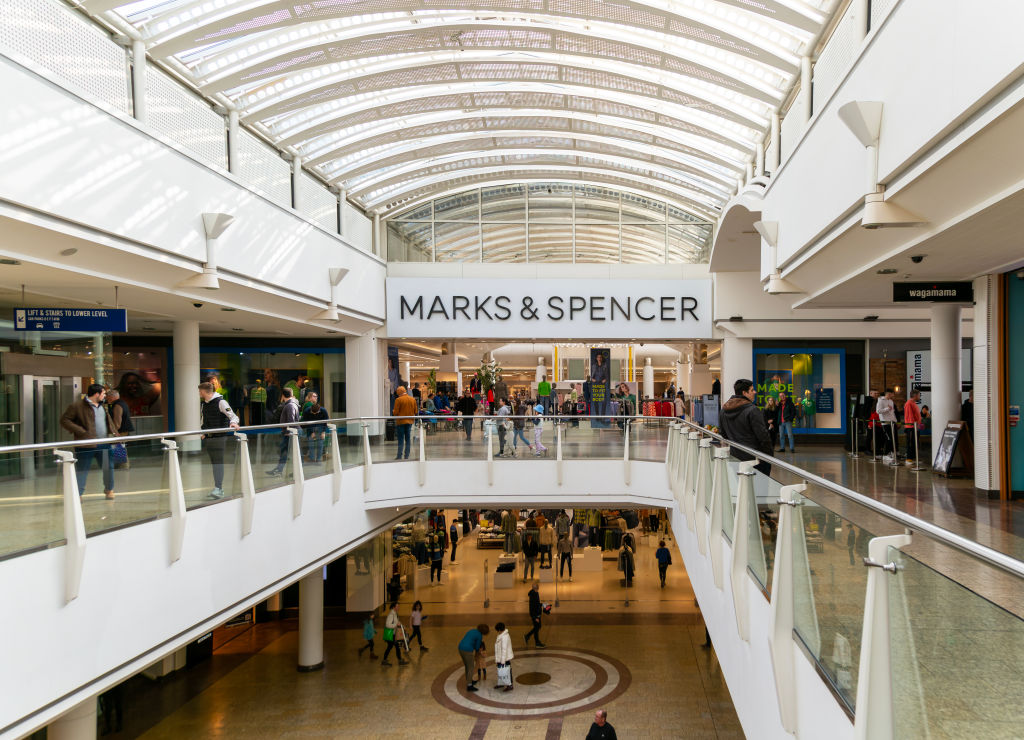M&S is back in fashion: but how long can this success last?
M&S has exceeded expectations in the past few years, but can it keep up the momentum?


Marks & Spencer’s (LSE: MKS) Christmas trading performance has confirmed that the company is back in business. Investors with a long memory, however, are going to take more convincing. M&S has been in turnaround mode since 2005 and along the way, it has suffered several false starts. Investors who have stuck with the business have been sorely disappointed, seeing a total return of just 4.4% per annum over the past 15 years, roughly half the FTSE All-Share’s total yearly return of 8%. Furthermore, over the past five and ten years the shares’ total annual return has been 1% and -1.9% respectively.
However, the company has come a long way from the depths of the pandemic, when it cut its coveted dividend and had to renegotiate its overdraft facility with banks to give it more breathing space. In some respects, the pandemic was a wake-up call. While M&S had to close its larger stores selling so-called non-essentials, such as clothing and homewares, it was allowed to keep its food halls open to the public. Meanwhile, sales of non-essentials online boomed. Marks used this time to invest in its online business and food operations but reiterated its commitment to its physical stores.
Hybrid shopping is the new normal
Covid changed the retail industry dramatically, although not in the way many expected. Analysts initially believed it would upend how consumers shop, with physical stores dying out and consumers placing all their orders online. That hasn’t happened. Consumers have migrated away from some physical stores, but the enforced spike in online sales proved to be short-lived. Instead, a hybrid style of shopping has appeared.
MoneyWeek
Subscribe to MoneyWeek today and get your first six magazine issues absolutely FREE

Sign up to Money Morning
Don't miss the latest investment and personal finances news, market analysis, plus money-saving tips with our free twice-daily newsletter
Don't miss the latest investment and personal finances news, market analysis, plus money-saving tips with our free twice-daily newsletter
Results from the likes of British Land, Next and Shaftesbury Capital illustrate the shift. British Land has seen an increase in demand for retail parks, where consumers can drive in, park close to a range of large stores, do their shopping and leave.
Next, with a presence in many of the UK’s retail parks, is an excellent example of how retailers have had to alter to adapt to this change. The group has invested heavily in building out its online infrastructure, but to complement, rather than replace, the physical business. Consumers can pick up and return goods at Next’s stores, so they don’t have to pay delivery charges or be at home when the package arrives. They can also browse a selection of other items in-store and do their shopping in the rest of the retail park at the same time.
With its central London estate, Shaftesbury Capital is seeing a completely different trend play out. Demand for its smaller, centrally situated locations is strong as consumers still want to have a unique in-person experience for higher-end products. They may view the product in person and then buy it online.
These results from across the retail sector show consumers still want an experience in person, but they don’t want to traipse around shopping centres or high streets trying to find something. They want a convenient experience where they can try something out and order it online later, or pick up an online order while they’re out collecting their weekly shop, without having to pay a delivery fee. If they stop and buy something else at the same time, then that’s a bonus.
This seems to be why online-only retailers, such as Boohoo and Asos, have struggled in the past few years, while the old guard, Next and M&S, have seen a resurgence (M&S’s own online venture with Ocado isn’t performing as expected).
A focus on improving the quality of the stores has helped the recovery. M&S has invested heavily in competing with the UK’s supermarkets on the cost of essentials such as milk and eggs, while also targeting people who are more conscious of sustainability with RSPCA-assured milk and meat products.
What M&S is doing right
What M&S has really nailed over the past few years – and has increasingly emphasised since its new CEO Stuart Machin took over in May 2022 – is doing what it does best.
It has doubled down on its higher-end food offering, betting that consumers will pay extra for high-quality food while also investing in its clothing. Rather than taking its market share for granted or flailing about trying to capture part of the next big trend, it has reinforced its market share in areas in which it is well established, such as food, clothing and physical stores.
The strategy is certainly paying off. Despite all the talk of economic hardship, recession and a cost-of-living crisis, 22 December 2023 was the firm's best pre-Christmas food shopping day in its 140-year history. Food sales jumped by 10% year-on-year in the key third-quarter trading period, and clothing sales rose by 5%. M&S claimed to have the highest market share in both categories for over a decade.
I don’t think it’s too much to say that M&S has turned itself around. But retail is a notoriously difficult industry to navigate. That makes it hard to say with any degree of confidence what the future holds.
Based on current analysts’ estimates, the company will report net income of £459million for the year to 31 March 2024, putting the stock on a forward price/ earnings (p/e) multiple of 11.6, falling to 10.6 next year. Compared with Next (14.1 for 2025) and Tesco (11.4 for 2025), that looks cheap. Analysts also predict that the dividend yield will return to 2.3% next year. These numbers suggest the stock may have further left to run, but investors shouldn’t expect continued outperformance.
This article was first published in MoneyWeek's magazine. Enjoy exclusive early access to news, opinion and analysis from our team of financial experts with a MoneyWeek subscription.
Get the latest financial news, insights and expert analysis from our award-winning MoneyWeek team, to help you understand what really matters when it comes to your finances.

Rupert is the former deputy digital editor of MoneyWeek. He's an active investor and has always been fascinated by the world of business and investing. His style has been heavily influenced by US investors Warren Buffett and Philip Carret. He is always looking for high-quality growth opportunities trading at a reasonable price, preferring cash generative businesses with strong balance sheets over blue-sky growth stocks.
Rupert has written for many UK and international publications including the Motley Fool, Gurufocus and ValueWalk, aimed at a range of readers; from the first timers to experienced high-net-worth individuals. Rupert has also founded and managed several businesses, including the New York-based hedge fund newsletter, Hidden Value Stocks. He has written over 20 ebooks and appeared as an expert commentator on the BBC World Service.
-
 The most influential people of 2025
The most influential people of 2025Here are the most influential people of 2025, from New York's mayor-elect Zohran Mamdani to Japan’s Iron Lady Sanae Takaichi
-
 Millions of parents are missing out on up to £720 a year in extra pension cash – are you affected?
Millions of parents are missing out on up to £720 a year in extra pension cash – are you affected?A mum who narrowly missed out on the pension boost said she “never knew the government rule existed” and wants other parents to use it
-
 8 of the best properties for sale with indoor gyms
8 of the best properties for sale with indoor gymsThe best properties for sale with indoor gyms – from a four-storey mews house in London’s Knightsbridge, to a 1920s Arts & Crafts house in Melbury Abbas, Dorset
-
 Top stock ideas for 2026 that offer solidity and growth
Top stock ideas for 2026 that offer solidity and growthLast year’s stock ideas from MoneyWeek’s columnist and trader, Michael Taylor, produced another strong performance. This year’s stocks look promising too
-
 Market predictions for 2026: Will Dubai introduce an income tax?
Market predictions for 2026: Will Dubai introduce an income tax?Opinion My 2026 predictions, from a supermarket merger to Dubai introducing an income tax and Britain’s journey back to the 1970s
-
 Stock markets have a mountain to climb: opt for resilience, growth and value
Stock markets have a mountain to climb: opt for resilience, growth and valueOpinion Julian Wheeler, partner and US equity specialist, Shard Capital, highlights three US stocks where he would put his money
-
 The steady rise of stablecoins
The steady rise of stablecoinsInnovations in cryptocurrency have created stablecoins, a new form of money. Trump is an enthusiastic supporter, but its benefits are not yet clear
-
 SRT Marine Systems: A leader in marine technology
SRT Marine Systems: A leader in marine technologySRT Marine Systems is thriving and has a bulging order book, says Dr Michael Tubbs
-
 Goodwin: A superlative British manufacturer to buy now
Goodwin: A superlative British manufacturer to buy nowVeteran engineering group Goodwin has created a new profit engine. But following its tremendous run, can investors still afford the shares?
-
 A change in leadership: Is US stock market exceptionalism over?
A change in leadership: Is US stock market exceptionalism over?US stocks trailed the rest of the world in 2025. Is this a sign that a long-overdue shift is underway?